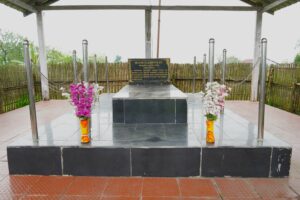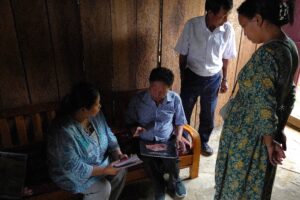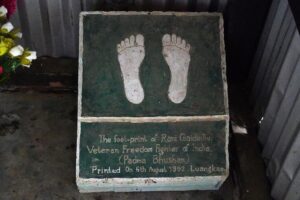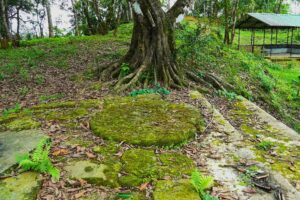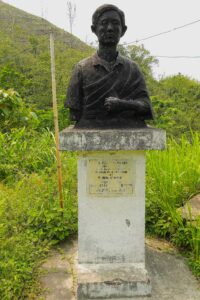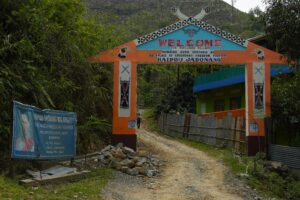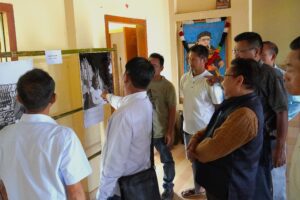
Museum in Motion: Exhibition as Repatriation?
Lying at the very heart of the DiMuse project are the forms of community engagement that made possible the digital return of the artefacts in a culturally sensitive and substantive way. With this in mind, we sought to digitally return the Gaidinliu Collection in various ways. We shared the digitised material on USB pen drives along with printed notebooks replicas with selected cultural, religious and community organisations. Going beyond these practices that see digital repatriation as digital data sharing, we sought to include a series of community engagements that looked at the formats, interfaces and media through which the digitised Gaidinliu Collection could be returned to the community.
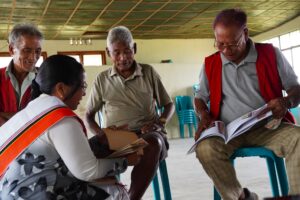
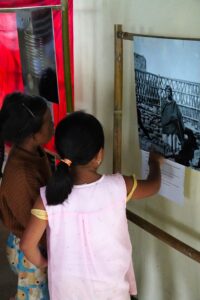
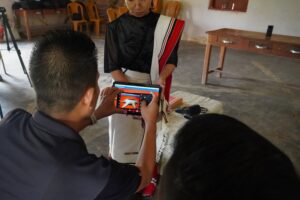
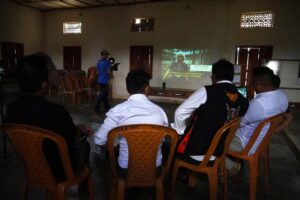
We organised a series of pop-up exhibitions that would display large-format prints of the digital images, supplemented by information from the museum catalogue. Visitors would also be free to go through the printed catalogue that contained additional images and detailed information about the collection. Assisted by research associates and volunteers, visitors could also explore the 3D models of some selected objects on an Android tablet.
As community-curated events, these exhibitions were community-driven efforts, managed by research associates and local volunteers. From fabricating the display frames to organising communal meals to managing publicity through community networks, the events became possible only with community participation. This went a long way in creating a friendly, informal atmosphere where visitors came to look at the displays but also to talk about them—with each other and with the project staff. Often, it was after the communal lunch served to visitors that people felt comfortable enough to share their recollections and opinions. Before long, these extended conversations would gather a group of curious listeners—some of the youngers members in the audience making a video recording on their smartphone, a few of the older ones insisting on a photograph afterwards.
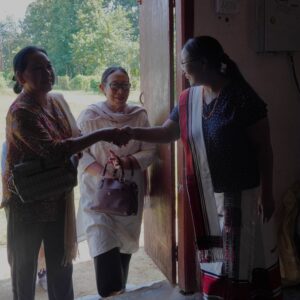
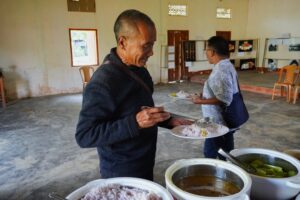
In Tening, for instance, local weavers came to look at the old, now rare, woven designs on some of the clothing items in the collection. The use of large format-printing and book-style catalogue as a way of sharing the digital objects allowed those uncomfortable with digital touchscreens to access the collection unassisted. As we realised over the course of many exhibitions, this was particularly important as it opened up the collection for many older people who had met Gaidinliu when she was alive.
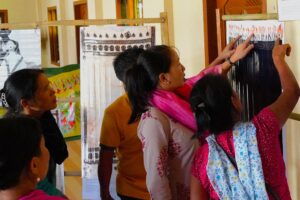
It is interesting to note that the physical exhibition played an important role in enabling the digital transmission of the collection. For instance, visitors posting images from the exhibitions was an important way in which the collection came to be digitally shared. Interestingly, most visitors preferred sharing the images through messaging apps such as WhatsApp (with specific persons or groups) rather than on social networking sites such as Facebook (as public posts). It is significant that the collection comes to be digitally shared as a snapshot of a personal experience in the physical exhibition.
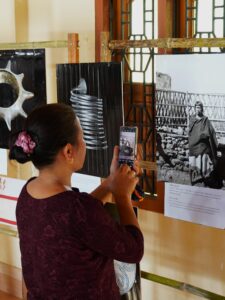
Given the difficulties of road travel, it was clear that only a relatively small number of people would have the opportunity to visit the site of our pop-up exhibitions. So even as we sought to set up a traditional exhibition where possible, we were keen to embrace the flexibility of form and interface afforded by the digital format of the collection. With catalogues describing the collection, a short film, and printed replicas of the notebooks, we tried to take the exhibition beyond the more urbanised Zeliangrong settlements. Over the course of a year, we were able to take the collection to most of the Zeliangrong-inhabited areas in Assam and Nagaland. We were able to organise pop-up exhibitions and workshops in Haflong, Tening, Jalukie, Yimrup, Kohima, and Dimapur towns, followed by extensive travel in the rural areas accessible from these towns.
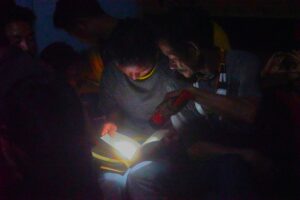
Beyond the fixed pop-up exhibitions, the ‘viewings’ of the collection objects took place in a wide variety of contexts. During our visits to various villages to interview a specific person, we would often be requested to organise an improvised viewing session for the villagers. These would sometimes take place in the village headman’s backyard, at other times in the local school building. These would be sessions where the project staff would introduce the background of the collection. This would be followed by a screening of the film using a portable projector, before finally passing out copies of the catalogues, printed replicas and the Android tablet with the 3D models. Project staff would then actively participate in discussions about the artefacts, asking questions, providing clarifications and listening to people’s responses. The group viewing sessions presented the various materials to a collective audience in a curated manner. In other words, they were very similar to the formal pop-up exhibitions in most respects, except for the presence of the large-format displays. The possibilities afforded by, on the one hand, the digital format and on the other, the cultural protocols of everyday village life, came together to create a space for viewing the collection whose boundaries remained very flexible and contingent upon context. In this sense, the ‘exhibition’ that travelled during the DiMuse project could not be identified with a fixed physical format, layout and modes of visitor engagement.
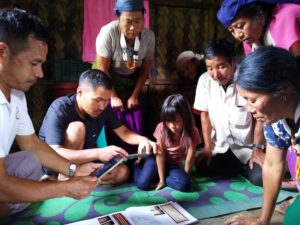
As part of our fieldwork in Manipur, we also visited Lungkao and Kambiron, the birthplace of Gaidinliu and Jadonang, respectively. Sharing the collection with villagers and Gaidinliu’s descendants became all the more poignant as they recounted stories from her childhood, her meeting with Jadonang, and her eventual escape from Lungkao. Each of these memories enlivened the collection, situating the artefacts with a landscape that resonated with a collective memory of Gaidinliu’s struggle.
The exhibition format thus enabled us to engage with the material forms of digitally-mediated cultural practices through which the collection came to be ‘returned’ to the community and became meaningful within a specific digital-cultural context. Further, it allowed us to emphasise digital repatriation as an ongoing, process that mobilised the digital object in various ways rather than an as a singular act of return.

